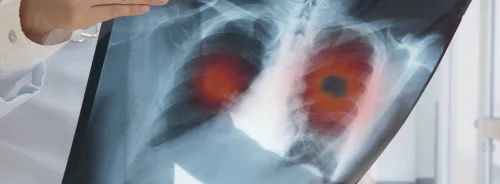HealthManagement, Volume 8 - Issue 1, 2008
Author
Prof. Mathias Goyen
Chief Executive offi cer
UKE Consult und
Management GmbH
Hamburg, Germany
Outsourcing is a very important factor in our economy today. Modern companies know that for their non-core competencies, they need to seek specialists. Outsourcing delegates the non-core operations from internal production to an external entity specialising in that particular operation. It is part of the economic world since the 1980s. In healthcare, however, it is more or less known of for just the past ten years, and not yet common currency.
Outsourcing and Radiology
Outsourcing in hospitals is becoming more and more popular. The most common services that are outsourced are non-medical tertiary services that include catering, cleaning, laundry, logistics, technical facility management, etc. In recent years, however, hospitals have started to outsource medical services, so-called “secondary services”, which include laboratory, pathology as well as radiology services. Some hospitals have even outsourced entire service lines such as cancer centres, outpatient surgery or ophthalmology. Structured and operated effectively, outsourcing can produce significant benefits while enabling hospitals to focus limited resources and management efforts on other areas.
Radiology is increasingly being considered for outsourcing due to its unique operating and funding challenges and because of interest expressed by radiologists and outside vendors. The challenge of responding to constant technological advancement, labour shortages, and increasing customer service expectations in the face of declining reimbursement, managed care, capital constraints, and outpatient competition are compelling hospitals to consider outsourcing. Moreover, the daunting financial and operational challenge of transitioning radiology from an analogue world to a digital one makes management and funding of radiology even more of a challenge for hospitals.
Radiology outsourcing arrangements can be tremendous win-win opportunities for radiologists and hospitals; they are very significant undertakings and should be entered into only with realistic goals, commitment, due diligence, and confidence by both parties.
Advantages to Radiologists of Outsourcing
Outsourcing the radiology department to radiologists capable of effectively managing technical operations offers multiple potential advantages. The structure and the terms of the arrangement will influence which advantages apply and the magnitude of the benefits. Advantages to radiologists include; a share in technical profits; greater security with the hospital; enhanced autonomy and authority to manage technical operations; increased discretion over technical staff and systems, which can in turn improve professional productivity and service; the ability to operate without hospital operating and capital constraints; opportunities for management compensation; and the freedom to create more competitive outpatient services.
Potential Models
Regarding radiology, there are several models for structuring an outsourcing arrangement. The appropriate model will depend on the organisation’s financial, operational, and political dynamics and on the specific goals. Common models are:
Management contract: Radiologists have an agreement with delineated management responsibility and authority while the hospital retains ownership and employees. Radiologists are compensated on a management fee basis with or without additional performance targets and incentives.
Management contract with financial risk: Radiologists have a management contract that involves some degree of risk if financial and/or quality and service indicators are not met.
Leased department: Radiologists enter into an arrangement to provide the entire technical radiology operation, including employees, rent, supplies, billing agent, and marketing. However, the department must still be integrated with and operated within hospital licensure and regulatory requirements. This model may or may not include technical asset or facility ownership through an additional agreement.
Joint venture: Radiologists and the hospital enter into a joint venture to own and operate some component or all of the technical radiology services within and potentially outside the hospital. Radiologists have a separate agreement with the joint venture for management of technical services. It may include a third party for financing and other services.
Sale of department: Radiologists purchase the assets and ongoing business of the radiology technical operation from the hospital and provide the service on a contractual basis.
Will Nighthawking Erode Profession?
24/7 radiologist coverage is increasingly demanded by many hospitals and healthcare systems. The difficult task with regard to establishing this goal is to offer a full-range service during the night. Once a radiologist did not have to be in the same building as the physician requesting a read, it was only a matter of time before these colleagues no longer had to be on the same continent. Some call this practice “nighthawking,” and one of the largest US-based companies offering such services is NightHawk Radiology. The company says more than 500 US hospitals now rely on its 35 radiologists — US-born and trained — in Australia and Switzerland.
Radiologists may employ this technology for their own purposes, but they have to consider that such technology could one day be their complete undoing. There is a danger that teleradiology could reduce radiologists to the status of a technician. Radiologists can use overseas evening radiology coverage services to provide continuous interpretations to lessen their call burden. These services provide quality exam interpretations, either preliminary or final, while the home radiologists sleep. That alone is not a threat. But these services can provide their readings at a significantly lower cost than that of the home radiology group. Not only are these readings less costly, but current evidence is that costs are continuing to decrease as the number of suppliers in the market increases.
Despite this, the potential advantages of outsourcing for hospitals include the ability to:
• Shift or share risk for financial performance with the radiologists;
• Align incentives for improved quality, service, and financial performance;
• Effect greater expertise and more focused management of radiology while freeing limited hospital management time and resources;
• Attract outside sources of capital for the growing cost of radiology equipment and staff;
• Improve billing and compliance;
• Develop or consolidate outpatient services with radiologists to enhance growth, competitiveness, and cost-effectiveness and,
• Eliminate redundant overhead by operating radiology as a single business unit rather than separate organisations.
Conclusion
Outsourcing radiology can offer true advantages if the parties involved are committed and capable and if winwin opportunities exist. Significant preparation and research is strongly recommended prior to entering into such an arrangement in order to identify the potential value to the parties involved, assess the risks and requirements, and ensure that the parties are capable of delivering on their responsibilities and intended results. There are several possible models for structuring an outsourcing arrangement.
Institutions interested in an outsourcing arrangement must choose the model that best fits their needs and goals of the parties involved. Outsourcing is not something to be tried at home unless both parties are prepared for and capable of managing the substantial change and challenges associated with such a significant undertaking. The use of teleradiology, including outsourcing, is likely to improve on-call productivity, but worries remain with regard to its potential effect on patient care.





